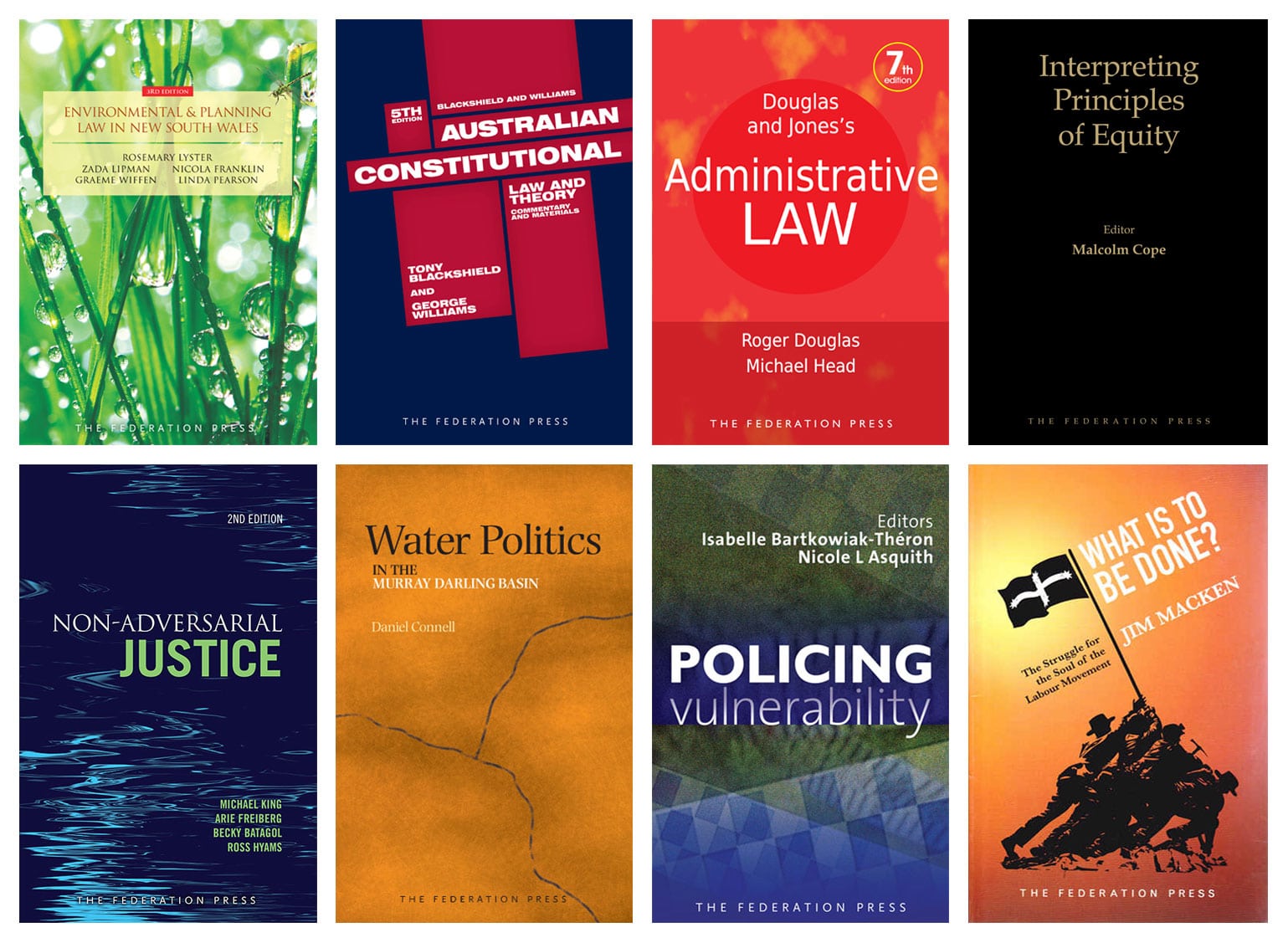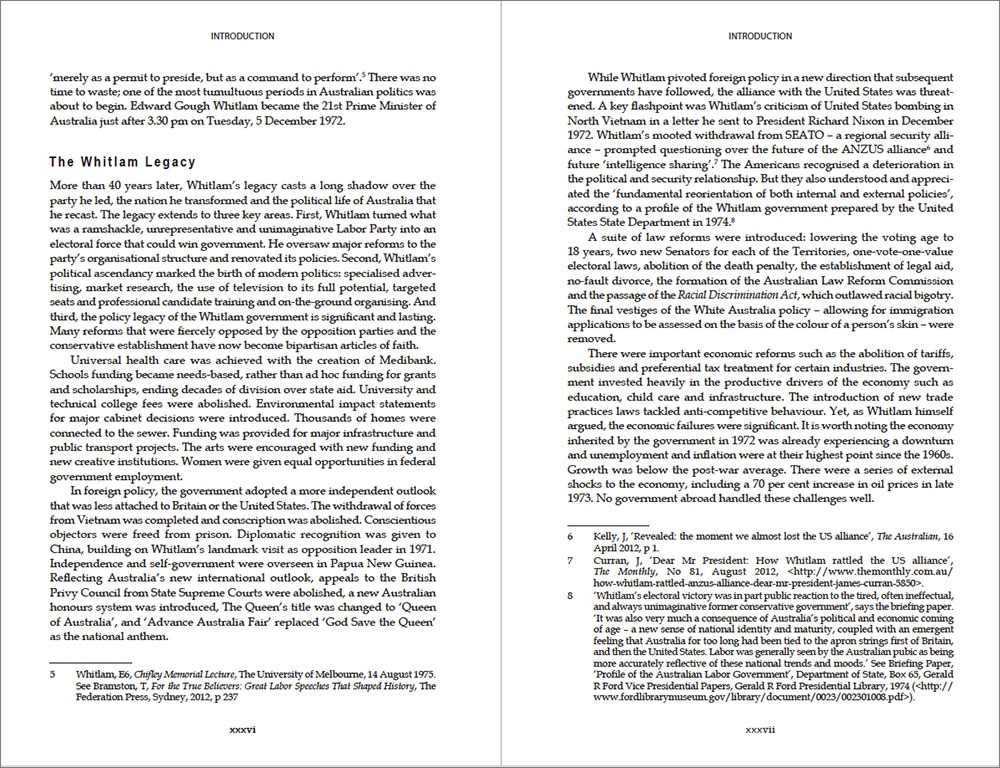Typefi helped this independent academic publisher build a reputation for speedy and efficient publication.
The Federation Press is an independent, Australian-owned and run publishing company specialising in legal, social and academic books for the tertiary sector and the broader public.
Founded in 1987, the company prides itself on being a genuine small publisher, with nine experienced employees working from one open-plan office in Sydney. It has over 400 books in print, and publishes around 40–50 new books and new editions each year.
Books range in size from slim 150-page volumes to 1000-page tomes and are produced mainly as paperbacks, although some have cloth bindings and dust-jacketed hardcovers, and some are produced as e-books.

Overcoming an inefficient manual typesetting process
For many years, The Federation Press undertook both editing and typesetting in Microsoft Word, allowing the team to maintain all production processes in-house (except cover design and printing).
Over time, however, the disadvantages of using Word in this way began to outweigh the benefits, especially as it became harder to find experienced editors both able and willing to do typesetting in Word.
The manual typesetting process was time-consuming and laborious, with minor adjustments to the text at late stages in production could involve significant amounts of rework.
Books became ‘tied’ to one computer—opening Word files on a different machine could make unwanted changes to the formatting and layout—while the insertion of high-resolution graphics caused the files to become unwieldy and unstable.
Landscape tables and graphics had to be created separately for prepress insertion by the printer, who charged extra for this work.
Even without graphics, most books were too long for Word to handle in a single file, so books were broken down into chapters and sections, and individual PDFs of these files were sent to the printer in A4 size, regardless of final trim requirements.
The printer then amalgamated the files, set the trim, and inserted landscape tables as part of the prepress work. The table of contents was also created manually.
This process was inefficient and prone to errors such as inconsistent running headers and incorrect pagination, which were sometimes only detected on the printer’s proofs and could be costly to fix.
The final press files also remained with the printer. As printers closed down or merged, it became difficult to maintain access to press-ready PDFs for The Federation Press’s existing publications, making reprinting or e-book conversion particularly challenging.
The solution: Typefi Workgroup for automating composition
In 2009, The Federation Press installed Typefi Workgroup as a scalable ‘out of the box’ server solution with a small number of client licences to allow access for up to five editors and three designers.
With the assistance of a Typefi Solutions Consultant, the Federation Press team identified three main types of books by structure:
- Student cases and materials textbooks;
- Books by an author or co-authors; and
- Books comprising several essays contributed by different authors and collated by editors.
A fourth structure type—annotated legislation—was added to the mix a year or so later.
A set of master Adobe InDesign templates was developed for each structure, with provision for output in a variety of print sizes. Design work on these templates was performed by two freelance designers as needed.
The editorial team continued to author and edit in Microsoft Word, using the Typefi Writer Word add-in to prepare the files for production.
With the click of a button, Typefi Workgroup automatically composes the editorial content into the pre-prepared design templates and rapidly renders it as a print-ready PDF.

Initially, production rates were slower following the implementation of Typefi Workgroup as the two editors learned the new system, revised their workflows, and worked with the designers on refining templates.
However, six months after implementation, one of the editors left the company. The single remaining editor continued to maintain the existing production rate at just under 40 books per year over the subsequent two years.
Faster production, better-looking books, and full control
Typefi Workgroup now automatically takes care of many tasks previously done manually in Word, including the table of contents, running headers and pagination.
Using Adobe InDesign templates has enabled more flexibility in layout and design. Graphics are simply inserted as links in the Microsoft Word source document, and the images are then placed into the layout during the automatic composition process.
“The aesthetic look of the pages from Typefi has improved with a more consistent layout for the books across the whole range of those published,” said Kathy Fitzhenry, Editorial Director.
Entire books can be proofed at any stage before going to the printer, and any errors or late changes to content and design can be rectified quickly and easily in-house without time-intensive reformatting.
By maintaining full in-house control and taking advantage of Typefi’s rapid automatic composition, it also became much easier—and economically viable—for The Federation Press to repurpose content, such as creating custom textbooks for specific university courses by extracting and combining content from multiple other textbooks.
Significant savings on print costs
According to co-founder Chris Holt, the ability to produce industry-standard press-ready files in-house—complete with trim marks—enabled the company to obtain competitive quotes from more printers, leading in some cases to cheaper printing costs.
Template design changes automatically applied during book production could also reduce the page count, leading to further savings.
One of the first textbooks The Federation Press produced with Typefi was the 5th edition of Blackshield and Williams Australian Constitutional Law and Theory. The 4th edition was 1520 pages, but with changes and new material, the 5th edition’s page count was well over the maximum for any printing press, even using thin paper.
A simple layout change on the InDesign template—moving the page numbers from the bottom to the top alongside the running header—increased the lines of text that would fit on each page, and reduced the page count to 1472.
Instead of several days of intensive work reformatting all the pages manually, the layout update and rerunning of the entire job took just a few hours.
“Typesetting is more efficient with consequent cost savings,” Kathy Fitzhenry said. “It has been a very positive experience.”
Ready to take the first step towards revolutionising your publishing?
We’ll work with you to understand the publishing challenges you’re facing and determine which Typefi solution best suits your budget and production requirements. Start by telling us a bit about your publishing needs and we’ll be in touch!
